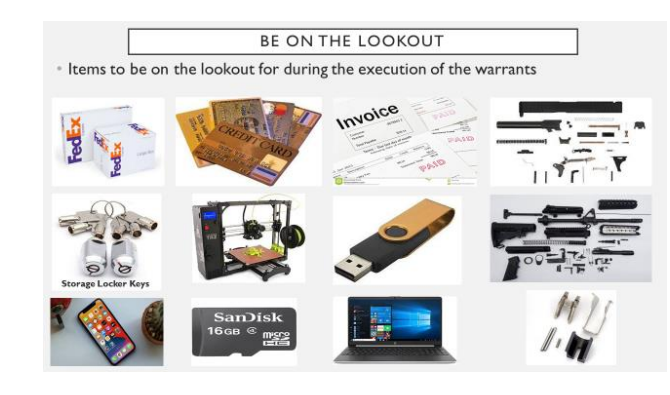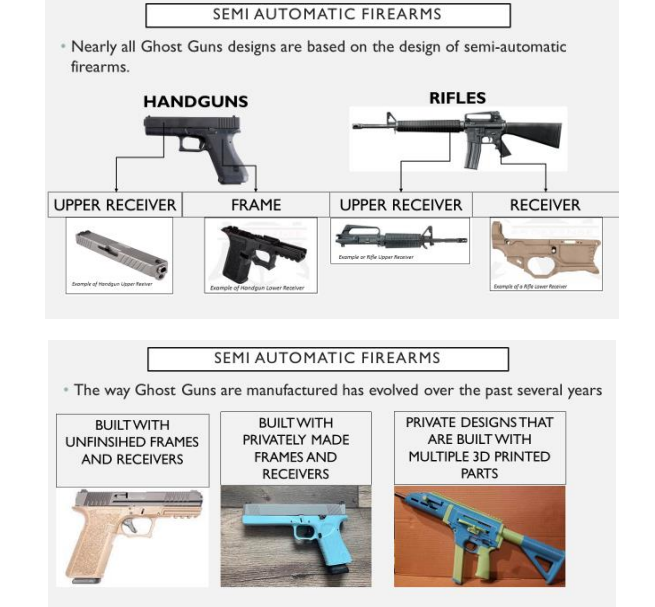An advocate for 3D printed firearms published a document allegedly from the New York Police Department (NYPD) on “ghost guns” made with 3D printed components. The individual claims to have acquired these documents from an internal NYPD source and leaked them to the social networking site Odysee. The NYPD has not yet issued a statement regarding the matter.
The report outlines the common configurations of ghost guns, where to purchase kits, and sites that host videos and files for 3D printing firearms. Those who shared it touted the document as a primer for anyone looking to begin producing firearms at home. As such, 3DPrint.com will not be linking directly to these files.
The document itself, if authentic, is an interesting glance at a police agency’s own gathered intelligence on the subject of ghost guns, firearms made with a unserialized lower receiver or “unique, non-commercial design.” While “ghost guns” and 3D printing are often associated in the public’s mind, the majority of these firearms are manufactured with 3D printing technology.
The term “ghost gun” is used to describe firearms that lack serial numbers, making them difficult to trace. According to U.S. law, specifically the Gun Control Act of 1968, the individual components of a firearm, apart from the lower receiver, are not legally classified as complete firearms, and hence, are not required to bear serial numbers. However, the lower receiver, being a critical component in firearm operation, is legally recognized as a firearm and must be serialized once it reaches a certain stage of completion.
An exception exists in the form of what’s colloquially known as an “80% lower receiver.” This term refers to a lower receiver that is 80% completed; at this stage, it is not functional and therefore not legally recognized as a firearm, exempting it from serialization requirements. This legal framework allows individuals to manufacture their own firearms for personal use. Nonetheless, when such self-manufactured firearms lack serial numbers, they are often referred to as “ghost guns.”
The notion of an “80% complete” part is more of a colloquial term rather than a precise legal standard. The Bureau of Alcohol, Tobacco, Firearms, and Explosives (ATF) provides guidelines on when a lower receiver transitions from being a mere piece of metal to a firearm, based on its functionality and the ease with which it could be made functional.
This legal system loophole has led to the emergence of numerous companies producing 80% receivers intended for minimal drilling, resulting in the production of largely untraceable firearms.
According to the NYPD’s statistics, 3D printed firearms accounted for 9.6 percent of the 6,638 firearms recovered in 2022. While the increase in the use of 3D printed weaponry in violent crime should concern law enforcement, anti-violence advocates, and industries relying on unrestricted access to 3D printed technology, the outsized attention given to a relatively small portion of overall crime doesn’t appear to justify the limitations that lawmakers are considering.
This documentation also alleges that future investigations into 3D printed gun construction will require data “from sources such as Amazon & Microcenter,” including the use of warrants to obtain sales data from these retailers. That should sound alarm bells for anyone concerned about free and unfettered access to the parts and materials required to use a 3D printer.
 NYPD guidance allegedly telling officers to be on the lookout for SD cards and 3D printers while executing warrants.
NYPD guidance allegedly telling officers to be on the lookout for SD cards and 3D printers while executing warrants.Should the purchase of filaments commonly used to print receivers raise a red flag? The NYPD allegedly identifies Creality’s Ender line of printers as being the most popular devices in the “3D gun community.” It would be a shame for a day to come when the purchase or possession of an Ender 3 puts someone under a surveillance spotlight.
As someone who has personally experienced the impact of gun violence within my family, I empathize with law enforcement’s desire to prevent violent gun crime before it occurs. However, I simply do not believe that fearmongering and restricting access to technology is the solution. An 18-year-old using a 3D printer to produce guns is a social failure that isn’t remedied by making it harder for other 18-year-olds to access 3D printers—especially not when the companies truly responsible for flooding the market with untraceable weapons will continue to operate with impunity.
Gun violence is a scourge on American cities, but our elected officials often prefer flashy, stop-gap measures instead of investing in the long-term social changes required to reduce levels of violence.
Subscribe to Our Email Newsletter
Stay up-to-date on all the latest news from the 3D printing industry and receive information and offers from third party vendors.
Print Services
Upload your 3D Models and get them printed quickly and efficiently.
You May Also Like
Josh Makeshift and the New Gold Standard 3D Printing Content Creation
In the beginning, 2007 or so, 3D printing videos were almost wholly absent from the web. Then, here and there, makers started to upload pictures of their rickety RepRaps and...
Teen Developed Desktop 3D Printing Extruder
Inexpensive desktop 3D printing extrusion has always been an impactful potential ally to 3D Printing users. Filabot and 3Devo have been trying to make this a reality for years, with...
Polymaker Unveils HT-PLA & HT-PLA-GF Line of 3D Printing Filaments
Today, Polymaker has launched a new line of HT-PLA & HT-PLA-GF filaments. These enhanced PLA versions increase the glass transition temperature of PLA from a normal 60°C to above 130°C....
3D Printing News Briefs, May 17, 2025: Color-Changing Materials, Humanoid Robot, & More
We’re covering research innovations in today’s 3D Printing News Briefs! First, Penn Engineering developed 3D printed materials that change color under stress, and UC Berkeley researchers created an open source,...

































